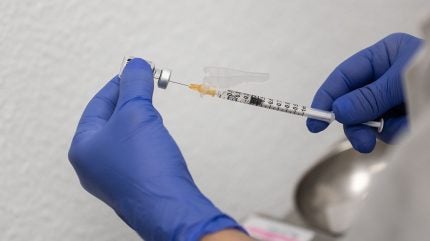

Regulations are the cornerstone of the pharmaceutical industry, with parenteral packaging often an area of scrutiny due to its importance in protecting and administering biologics. The regulatory frameworks within which parenteral packaging components must be manufactured and tested are constantly evolving as global standards change. Implementing new processes and compliance systems is challenging, often requiring significant investment in technology and training.
It can take a long time for pharmaceutical companies to successfully adapt and adjust to regulatory shifts. For example, although the European Union Medical Device Regulation (EU MDR) was published in 2017 and officially enforced in 2021, many pharmaceutical companies still struggle with the complicated process it imposed for filing “combination” products like prefilled syringes and pen injector systems, whereby companies must receive a Notified Body opinion regarding the device part of their product.
Unclear guidance and regulatory bottlenecks often act as further challenges when new regulations are introduced. Returning to the previous example, notified bodies are private entities, and companies must sometimes switch between different ones, facing inconsistent feedback and requirements. In addition, notified bodies have struggled to cope with the increased workload of certifying multiple varieties of devices under the EU MDR, lacking competency in certain areas, and a substantial gap persists between their capacity and the demand, leading to long application processing times.
In this article, we discuss three of the most important regulatory updates challenging the industry’s approach to parenteral packaging right now and, likely, for years to come.
The introduction of USP <382> and what it means for pharma
In December 2025, significant changes will shake up the US regulatory landscape for parenteral drugs as updates to the United States Pharmacopeia come into force, including a much-expanded version of <381> which earlier covered physicochemical, biological, and functional requirements of elastomeric closures in a single chapter. The USP has now expanded these requirements into four chapters (<381>, <382>, <1381> & <1382>), with functional testing falling under USP <382>.
USP <382> provides key performance requirements for elastomeric components used within parenteral packaging systems. ‘Systems’ is the key word here, as USP <382> introduces functional testing at the system level, reflecting the elastomer’s real-world use alongside other components such as a glass vial. Since the emphasis is now on complete systems rather than individual components, testing responsibilities are shifting from the components suppliers/manufacturers to the pharmaceutical companies or marketing authorization holders.
Where pharmaceutical companies could previously rely on certificates provided by their suppliers, they must now perform and document comprehensive functional testing of the entire container-closure system themselves, keeping in view the intended use conditions. As the industry prepares for the deadline, companies are investing in new equipment, developing their testing capabilities, and ensuring they have the in-house expertise to conduct such tests in accordance with the USP <382> requirements.
Meanwhile, the USP continues to finalize certain details of the regulations. A key example is the fragmentation test, which measures the size and number of small rubber particles generated from the closure when pierced with a needle. USP <382> proposed changing the fragment size threshold from 50 microns to 150 microns and changing the detection method to microscopic analysis rather than the naked eye. However, the FDA did not agree with the increased threshold, preferring to keep the previous 50-micron limit along with the microscopic method. A lack of sufficient supporting safety data was cited as the basis for this concern.
Due to this misalignment between the FDA and USP, fragmentation testing will remain in USP <381> while other functional tests have moved to <382>. The fragmentation test’s future implementation in <382> will depend on further alignment between the FDA and USP, as well as generation of additional supporting data. From 1 December 2025 onward, marketing authorization holders of drug products have to demonstrate compliance of their systems (e.g. vial system, prefilled syringe system, cartridge system, etc.) with USP <382> requirements.
How is the Chinese Pharmacopeia changing in 2025?
The US is not the only major pharmaceutical market evolving its regulations with regards to parenteral packaging. In March 2025, China’s National Medical Products Administration (NMPA) and National Health Commission (NHC) released a new version of the Chinese Pharmacopeia which came into effect on 1 October 2025, replacing the 2020 edition. In the new version, some guidelines and specific test methods were published.
The 2025 version is significant in that it marks the introduction of the country’s first mandatory requirements for container closure systems, including specific test methods such as fragmentation and penetrability testing for elastomeric closures, similar to those defined in USP <382>. However, it is also unusual in that it provides no acceptance criteria or limits, meaning companies are free to define their own pass/fail thresholds or use those from USP or European pharmacopeia.
Chinese GMP aligns with Annex 1
Also this year, the Chinese NMPA published an appendix for pharmaceutical packaging materials as an addendum to the Chinese Good Manufacturing Practice, closely aligning with the GMP Annex 1 compiled by the EU, WHO, and PIC/S published in 2022. Annex 1 covers every aspect of producing a sterile drug, with a high emphasis on holistic contamination control strategies, quality management systems, and clean rooms design to prevent contamination and enhance drug safety.
One unique aspect of the Chinese GMP appendix is that it is the first includes specific guidance for pharmaceutical packaging components manufacturers globally, covering the entire process starting from facility design, raw materials, molding, manufacturing, washing, and sterilization, to the component’s usage by pharmaceutical manufacturers. This is the first time any pharmaceutical regulation has been published specifically for packaging material manufacturers rather than the pharmaceutical companies.
According to Datwyler, a Swiss-based provider of elastomeric closures, its products and processes were already largely aligned with China’s new requirements, so the update has not posed any significant challenges. However, many smaller Chinese manufacturers may struggle to comply within the deadline of just one year, particularly when attempting to establish new quality management systems and meet stringent cleanroom standards.
How Datwyler is supporting the industry
As a trusted provider of elastomer closures to pharmaceutical companies, Datwyler’s technical and regulatory experts are dedicated to supporting customers in navigating the complexities of the regulatory landscape, whether that’s sharing of technical data packages including Drug Master Files (DMFs) with the US FDA, Health Canada, and Chinese health authorities, or providing Letters of Authorization to support drug approvals or other DMFs on a free of charge basis.
As testing and documentation responsibilities shift from suppliers to pharmaceutical companies under USP <382>, Datwyler is ready to support the industry through the challenges. For prefilled syringe systems and cartridge systems functional suitability/performance, the Chinese Pharmacopoeia has adopted the same approach of system testing instead of components testing. Using standard parameters, Datwyler provides all customers with baseline data packages offering basic insights and guidance on how to conduct the required testing under the new regulations. Any customers needing support on system-specific testing can also reach out for assistance, with Datwyler’s team offering tailored data packages to help customers meet the regulatory requirements for their unique systems.




